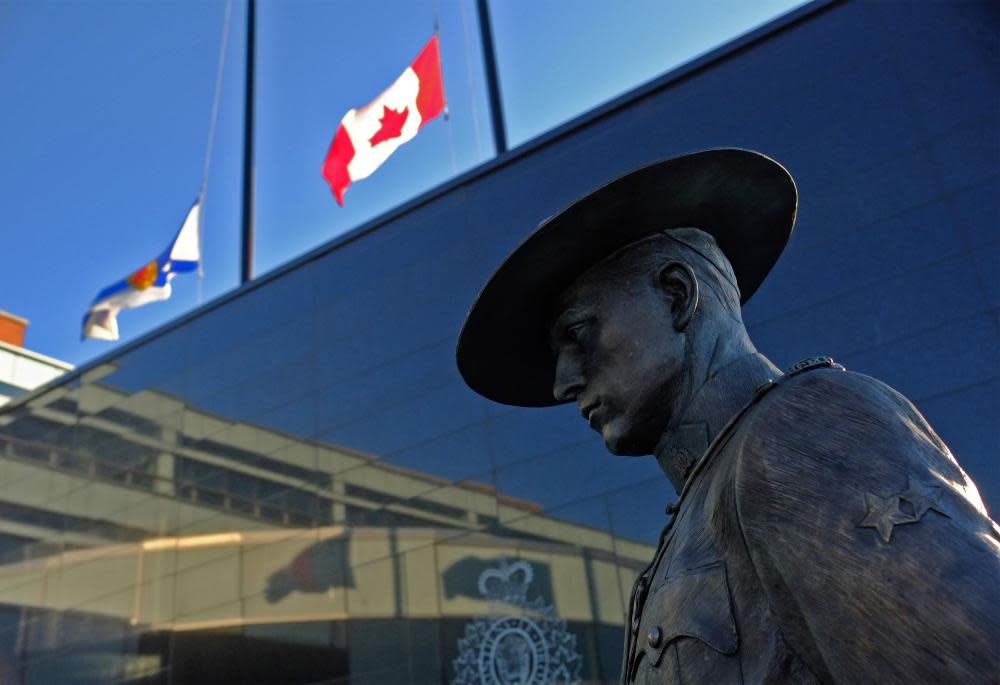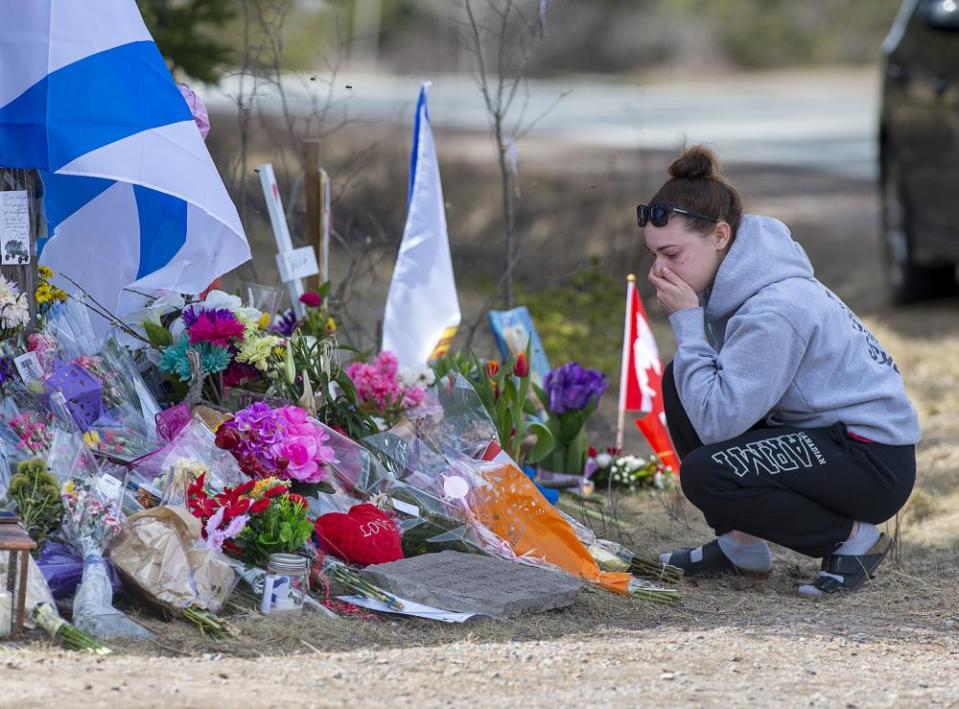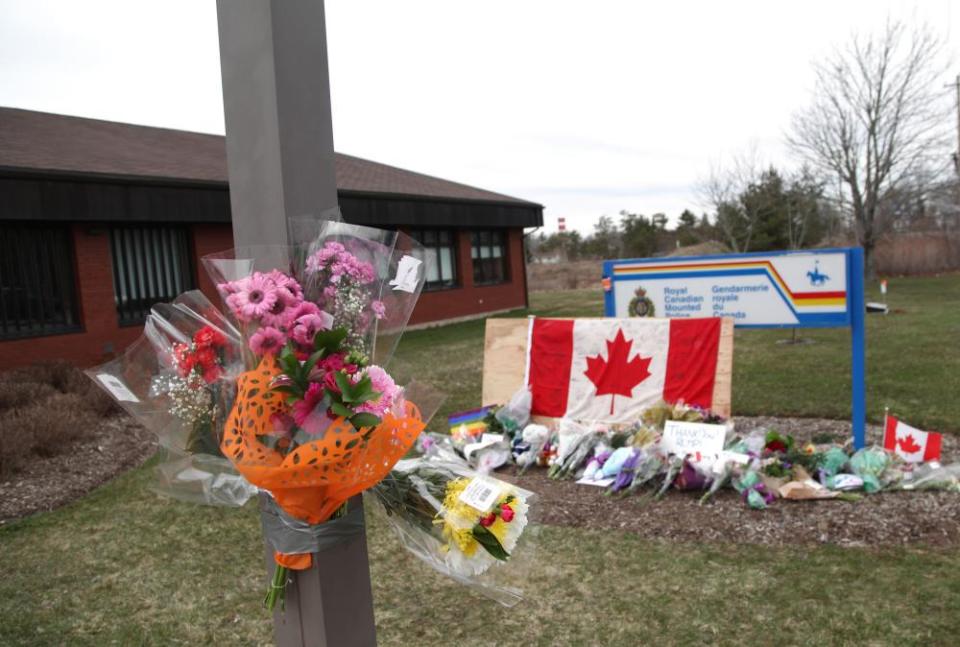Nova Scotia attacks: police heavily criticised for failures in Canada’s deadliest mass shooting

A cascade of failures within Canada’s federal police worsened the country’s deadliest mass shooting, a public inquiry has concluded, in a damning indictment that found the force has shown little interest in reforming in the years since.
The Mass Casualty Commission, a joint provincial and federal inquiry, was investigating the 2020 shootings in Portapique Nova Scotia, in which a gunman driving a fake police car spent more than 13 hours evading capture and killing 22 people.
The commission released its final report on Thursday, detailing the fixes to the systemic deficiencies within the Royal Canadian Mounted Police (RCMP) that are needed to restore trust in policing and to prevent another national tragedy, as well as the pressing need to address the root causes of violence.
Related: Twelve hours of terror: how the Nova Scotia shooting rampage unfolded
While the report conceded that officers deployed as first responders had little idea what they were arriving to, the RCMP nonetheless “fail[ed] to publicly share accurate and timely information” with the public, worsening the tragedy.
In one example, RCMP-issued mobile phones had no data, so officers unfamiliar with the area used their personal phones to navigate in the dark.
Despite the first three emergency calls identifying the shooter, Gabriel Wortman, by name and saying he was driving a near-perfect replica of an RCMP vehicle, officers on the ground were never passed that information, and instead assumed the shooter was driving a decommissioned vehicle with old decals.

Amid the chaos of burning buildings and numerous homicides, police tweeted they were responding to a “firearms complaint”, a message the commission said “in no way conveyed the threat presented by the perpetrator at that time”.
Police didn’t send out another message to the public until the next morning. Police had access to an emergency alert system in place, but senior RCMP officers told the commission they believed it was only to be used for weather and natural disasters.
In its nearly 3,000-page report, named Turning the Tides Together, the commission found the attack caused a “rupture of immeasurable magnitude and proportion” in the region and profoundly damaged the collective identity of those affected by the killings. Many residents said they no longer feel safe in their rural homes and others don’t trust police to help in an emergency.
The report also provided the most detailed and harrowing accounting of what happened on 18 and 19 April 2020, capturing what one resident described as “trauma, disbelief, shock [and] sadness”.
The evening of 18 April, the 51-year-old denturist Wortman assaulted his partner Lisa Banfield as they celebrated their 19th anniversary and then, armed with illegal firearms, left his home in a replica RCMP vehicle, driving around a beachside community. In less than an hour, he killed 13 neighbours and set fire to five homes and structures.
The shooter escaped and the next morning, killed nine more people. A police officer was among the dead.
Nearly 13 hours after the attack began, two RCMP officers shot and killed the gunman at a gas station.
The commission’s hearings began in early 2021 and ran for nearly a year. The inquiry initially stemmed from the frustration and grief of families who demanded answers for how a gunman could spend hours driving around the Nova Scotia countryside, killing residents with seemingly little resistance from police.
Investigators conducted nearly 250 interviews, including with 79 members of the RCMP. But much to the frustration of victims’ families, officers deployed as first responders were not cross examined by lawyers representing the victims in order to avoid amplifying the trauma they experienced. In response, some families boycotted the inquiry.
The commission was tasked with finding facts and making recommendations, but cannot assign blame or criminal and civil liability.

The commission found that, early on, officers mistakenly pursued Clinton Ellison, who had just discovered the body of his brother, Corrie Ellison, lying dead on the road. “We were getting ready to shoot him,” Constable Stuart Beselt told the commission. “If he would’ve ran, we would’ve shot him … I’m very thankful I didn’t shoot.”
It also found the initial tactical response was marred by confusion: there was no clear chain of command and because they didn’t know the area well, police didn’t realise there was a gap in their containment efforts and that the shooter had escaped.
For most of the night, they operated under the assumption he was still near Portapique, or that he was dead. It wasn’t until the next morning the RCMP “fully grasped” that he had escaped.
On the morning of the 19th, two Mounties accidentally fired five rounds at another officer they thought was the suspect, hitting a community hall where firefighters and an evacuee were sheltering.
Outdated technology, insufficient training and confusion over orders also hampered their response. Early in the response, an off-duty RCMP sergeant, driven to the detachment by his wife, was issuing orders to officers even though he’d told colleagues at the time he had consumed at least four alcoholic drinks earlier in the evening.
In addition to questions over police equipment and training, the commission also drew attention to domestic abuse as a root cause of mass violence. The shooter had a long history of violence against women and police were previously warned of his assaults and that he had a cache of illegal weapons.
The report found that “mass casualties occur infrequently, but women, children, and other marginalized people and communities experience violence every day”. It said that society has long viewed mass violence as the greatest threat “without considering its relationship to other more pervasive forms” of violence.
“We often fail to recognize the more insidious private violence that happens in our homes throughout this country, day in day out, and how that gets escalated,” the commission’s chair, Michael MacDonald, told the Guardian. “Although mass casualties are rare, when they do occur, they often are the result of escalation of ongoing years of violence.”
Lawyers for the victims previously said the RCMP must commit to changing the national police force, including new training and rethinking the command structure of the force.
In its section on policing, the commission uses the word “failure” 91 times, including the lack of progress on an overhaul, an inability to convey accurate information to the public, chronically understaffed contract policing, and an inability to listen to the public.
One resident told the commission: “I fear the police. I will not call them in an emergency.”
Another said the attack had “shaken my foundation of belief that law enforcement is there to protect you”.
The commission concluded that statutory changes were needed to amend the governing RCMP Act and a significant overhaul required to how it operates its contract policing system. The commission warned a “lack of political will” and the “paramilitary” culture within policing stood as barriers to change.
“More than two years after the event, RCMP leadership had done very little to systematically evaluate its critical incident response to the deadliest mass shooting in Canada’s history,” the said the report.
Despite little progress from the national police force, MacDonald is optimistic there is sufficient momentum, and pressure, to make the changes that are necessary.
“There are all kinds of reports with thousands of recommendations, sitting on shelves and unimplemented. This is not the first of these types of reports,” he said. “But it could be the last.”
• This article was amended on 31 March 2023. An earlier version said that the report was called Turning the Tides; in fact it is called Turning the Tides Together.

